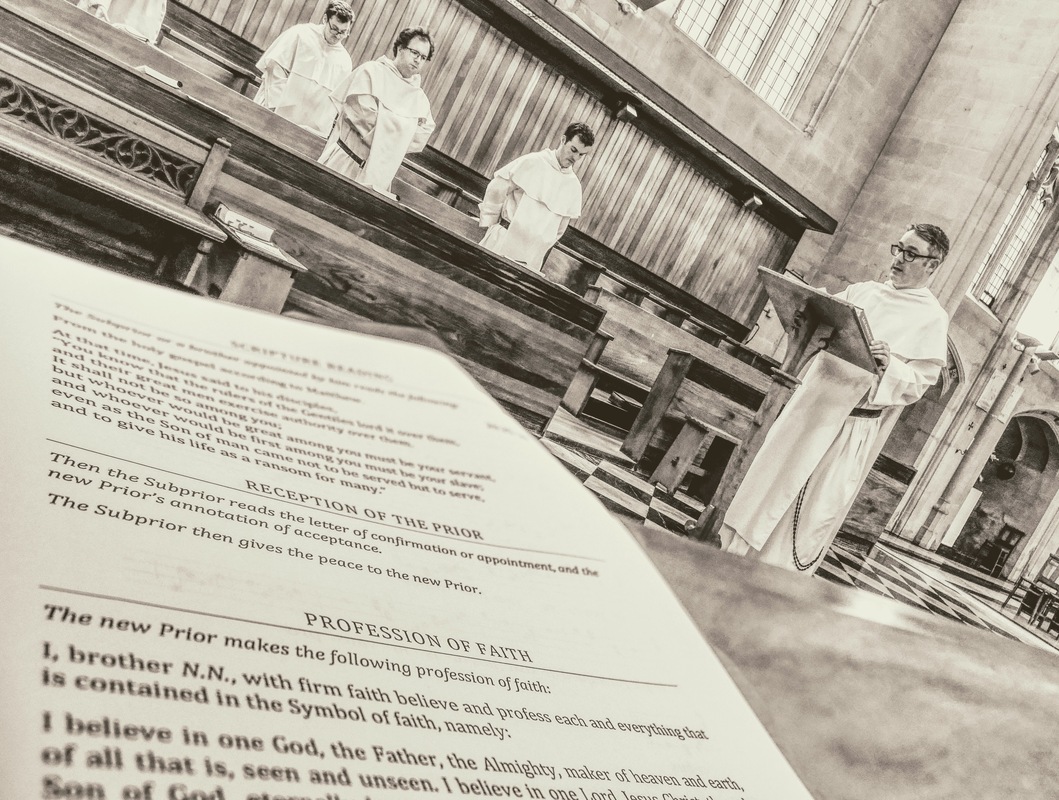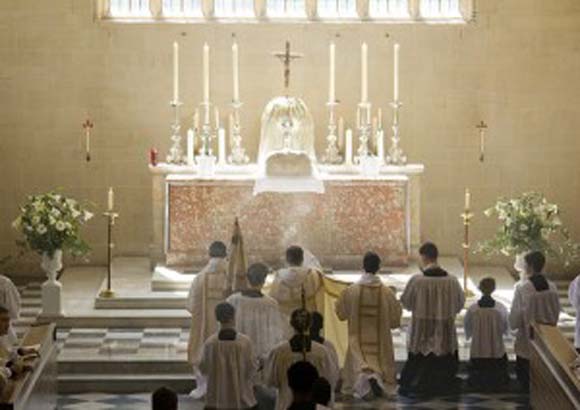
Corpus Christi
 The great feast of Corpus Christi is a liturgy that was prompted by the vision of a young girl, St. Juliana of Liège, was composed by the literary and theological genius, St. Thomas Aquinas, and draws us into a wondrous mystery at the heart of our faith: the real presence of Jesus in the Blessed Sacrament.
The great feast of Corpus Christi is a liturgy that was prompted by the vision of a young girl, St. Juliana of Liège, was composed by the literary and theological genius, St. Thomas Aquinas, and draws us into a wondrous mystery at the heart of our faith: the real presence of Jesus in the Blessed Sacrament.
How did the Feast come about? In the thirteenth century, St. Juliana received a vision when she was 16 consisting of the moon in its full splendour, but containing a dark line marking a void across its diameter. She interpreted the moon as representing the life of the Church on earth, and the dark line, as symbolising the absence of a liturgical feast in honour of Christ’s Body and Blood. This she sought to remedy by petitioning the Bishop of Liège, Robert de Torote who responding by instituting the feast in his diocese. Its spread to the universal Church in 1264 was thanks to Pope Urban IV whose devotion to the Feast was doubtless fostered when he served as the archdeacon of Liège.
When he instituted the Feast, he assigned it to the Thursday after Trinity Sunday (the Bishops of England and Wales decided to transfer this to a Sunday in 2006). Pope Urban made no explicit reference to a procession but his words gave a license to this popular devotional practice:
“On the Thursday itself [Corpus Christi] the devotes multitudes of the faithful should lovingly run together to the the churches because of this, and both the clergy and the people, rejoicing should raise on high songs of praise. For then the hearts and the prayers and the mouths and lips of all, should offer humans of singular gladness then let faith sin, hope dance, charity rejoice, devotion clap, the sanctuary rejoice, purity be delighted.” In places like Cologne, people began to process very soon after Pope Urban established the Feast. Processions continue to this day throughout the world. In Oxford, today we will have our own procession, starting at St. Aloysius, proceeding down St. Giles to Blackfriars, then continuing southerly through the city of Oxford to the University Catholic Chaplaincy for a final Benediction.
What is the role of St. Thomas Aquinas? It is widely accepted that St. Thomas Aquinas composed the liturgy for the Office and Mass of the Feast between 1261 and 1263 during his stay at Orvieto. The compositions are so beautiful and theologically profound that we use many of the texts as hymns and prayers outside the feast, such as at Benediction.
More broadly, St. Thomas’s contribution to the theology of the Eucharist was very significant. Early biographers attest that St. Thomas took the greatest care in writing about the subject. On one occasion, he asked Christ whether he had written correctly about him in the sacrament and was told “as far as it is possible for anyone in this life”. St. Thomas wrote “[Christ’s] flesh is given under the veil of the appearances of bread in this sacrament”. That Christ is present in His body in the Eucharist in an invisible way is apprehended only by faith. Thus in his famous hymn, Adoro Te Devote, St. Thomas writes: “On the cross only the divinity was hidden / But here [in the Eucharist] the humanity is also hidden.” So there is a twofold challenge for us to look upon the Eucharist and see both Christ’s divinity and his humanity. When we see this through the eyes of faith, we can say with St. Thomas:
“O precious and wonderful banquet, that brings us salvation and contains all sweetness! Could anything be of more intrinsic value?”


